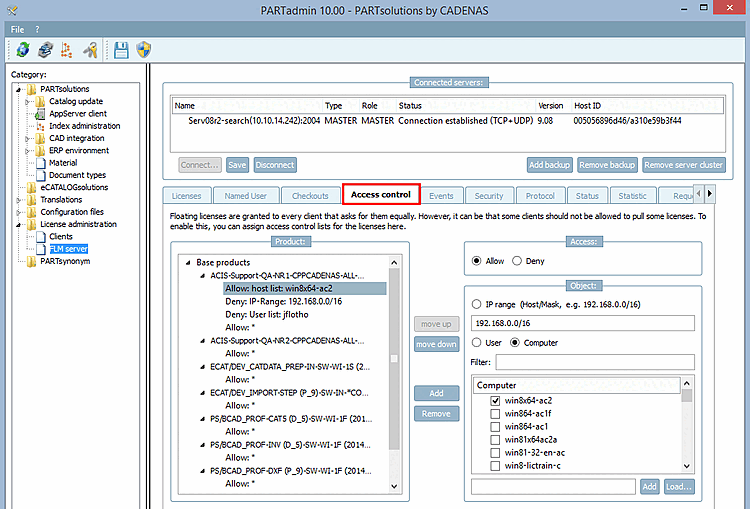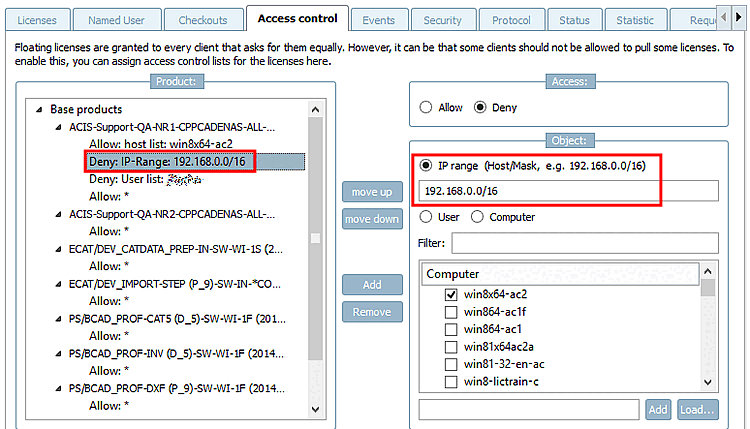Floating licenses are granted to every client that asks for them equally. However, it can be that some clients should not be allowed to pull some licenses. To enable this, you can assign access control lists for the licenses here.
The following example shows how to set up an access restriction for a specific floating product [Floating product] for a specific user and a specific computer:
Expand a base product or add-on and select a line beginning with "Allow " or "Deny ".
In the Object dialog area, select an option (Ip Range [IP Range] | User | Computer ).
Determine a range of IP addresses.
The syntax in the input field is based on Classless Inter-Domain-Routing (CIDR).
CIDR enables network masks of any length.
Behind the IP address, enter a prefix block separated by a slash '/' (see following figure). The block prefix shows the number of bits at the beginning of an IP address which identify the network. Then all other bits indicate the host.




